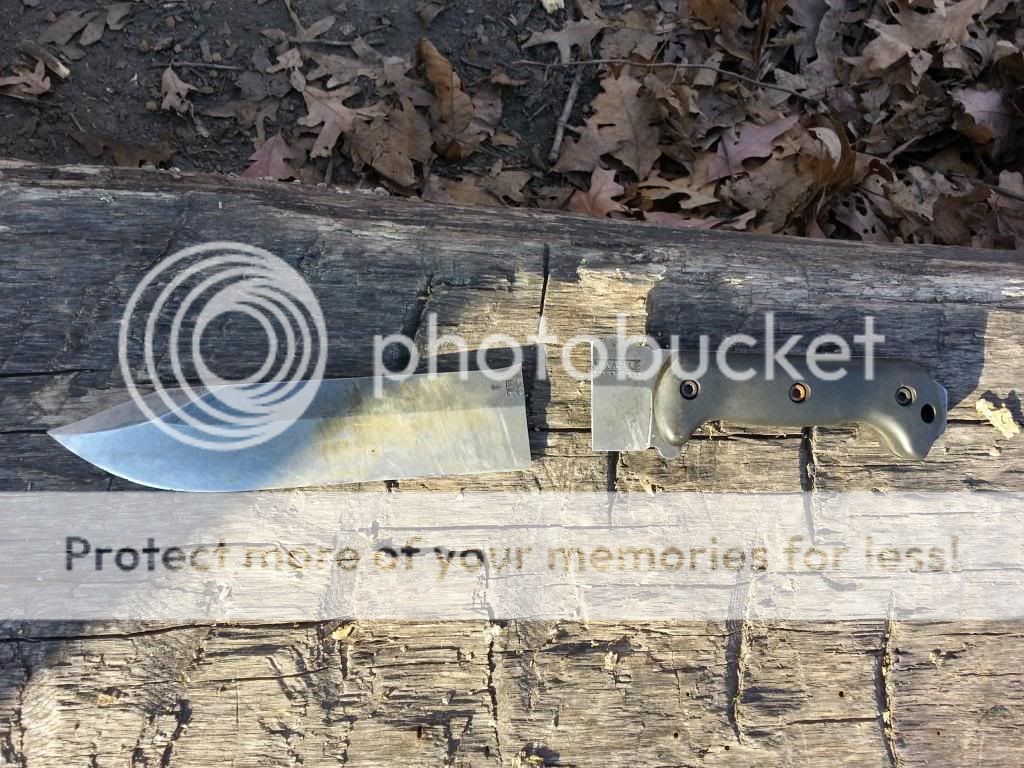- Joined
- Feb 22, 2012
- Messages
- 216
As they say: It's not the steel, it's the smith.
Anyone who says otherwise is misinformed or trying to sell you something.
This :thumbup:
The BladeForums.com 2024 Traditional Knife is available! Price is $250 ea (shipped within CONUS).
Order here: https://www.bladeforums.com/help/2024-traditional/
As they say: It's not the steel, it's the smith.
Anyone who says otherwise is misinformed or trying to sell you something.
This :thumbup:
I agree with Stabman, the BK9 would be my top choice probably, in that price and size range. Simply a fantastic knife. I am going to add these pics, though, not to disagree, or disparage Becker, because they are a fine company, and Mr. Ethan Becker is a great guy and provides a great product. But simply to point out that sometimes bad things happen to any knife, and I would be more concerned with how I use it, than finding an "indestructible knife." That's just my outlook on it, though.





Don't abuse the knife, and you've got a much better chance of it lasting forever. Just my .02.
Sam :thumbup:
For big survival knives I woud absolutely go with 5160. This to the point I would choose a knife over the other on that issue alone.
1095 is an excellent steel, but there are clues that it tends to be on the brittle side, and more appropriate for smaller knives (say up to 6-7").
When many years ago the Tops Steel Eagle (then made in 1095) was tested for batoning by Cliff Stamp, the teeth in its serration suffered small breaks in various places on their rear edges, which given the stout teeth design is a sure sign of brittleness.
I've batoned those same exact teeth in later Tops models made of 5160, and there was no problem.
Since those long-ago Cliff Stamp tests, I noticed most Tops knives are now in 5160, and I find the steel excellent and easy to sharpen, even with the huge task of thinning their thick grind...
Then there is this below, a 1095 big knife by a reputable company (which I would still like a lot, if the heat-treating did not curve the blade slightly on mine, a purely cosmetic dislike):
Another thing is I've noted is that the BK-9 seems to "vibrate/bite" the hand very hard while chopping, and I don't know if it is a combination of the nice but too hand-filling handle (no "give" room), the thinner stock, or whatever, but the impression of a nasty biting vibration when chopping bare hand makes it tiresome to use, despite a very reasonable chopping performance. Maybe this stinging vibration would not be as noticeable if it was made of a steel that is more "shock absorping"? It seems unlikely this would be noticeable, but the issue did seem to stand out in use. Probably more because of stock thickness differences...
Note that the Becker does hold an edge very well, so "relative" brittleness is not a loss without gain...
Gaston
On what planet are most of TOPS Knives made of 5160? Almost every one of their knives is still made using 1095.
